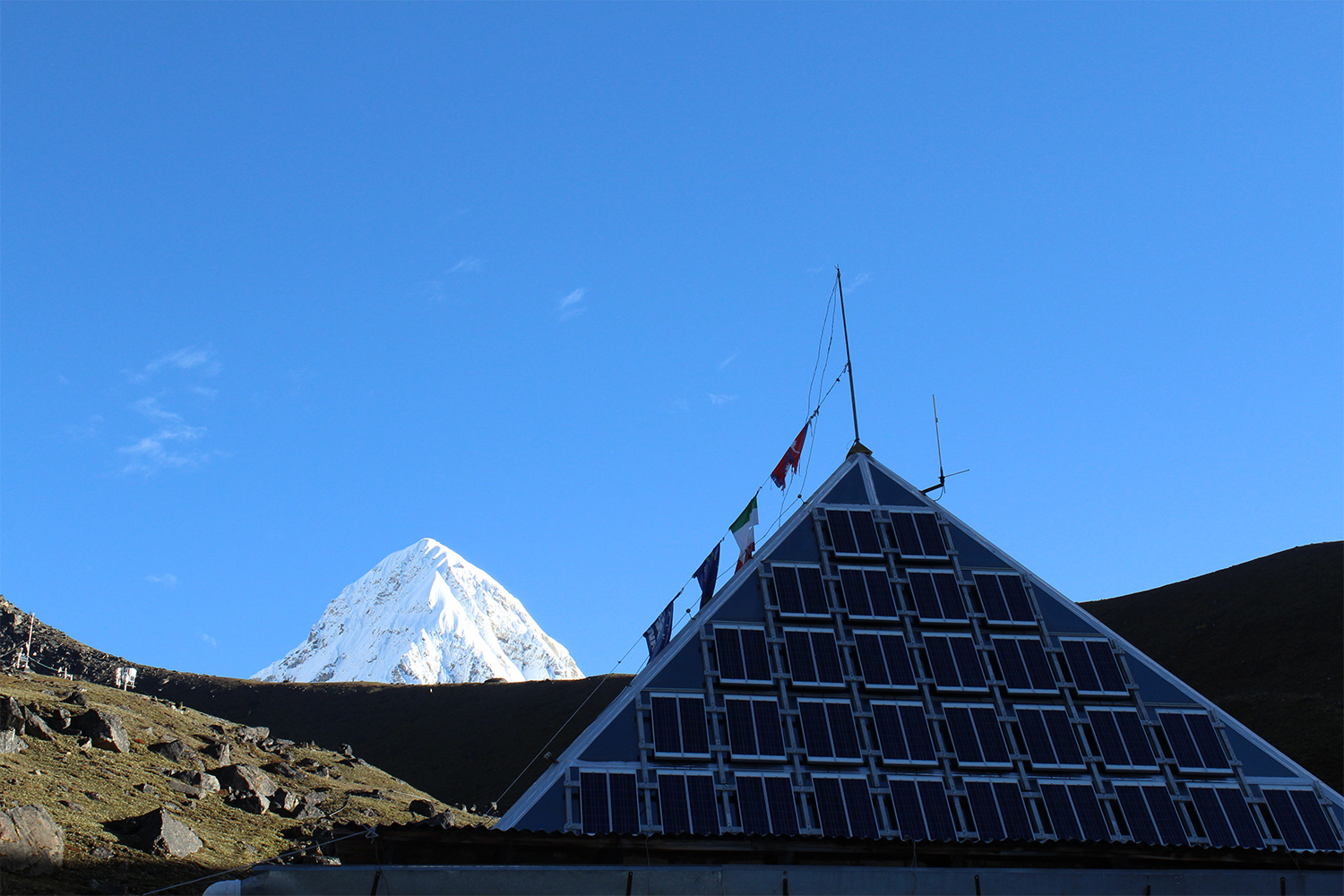
When will the Pyramid Lab come into operation?
–Chhatra Karki
Pyramid Lab, situated in the lab of Mt. Everest is the scientific laboratory located at the highest altitude from the sea level in the world.
The Scientific Research Center named Pyramid International Laboratory/Observatory, situated at the highest altitude in the word, has remained closed for the past eight years after the Italian government decided to cut its budget in 2014.
The laboratory has been operated and jointlymanaged by the Italian Ev-K2-CNR Committee and the Nepal Academy of Science and Technology (NAST). The main objective of the Ev-K2 CNR Committee that has been promoting the research activities in the Himalayan Region was to intensify research activities in Nepal, Pakistan, China and India that shares Hindu Kush-Karakoram-Himalayan Region. Following the decision of Italian government to cut the budget for the Laboratory, NAST has failed to manage alternative financial resources to operate the Laboratory.
Located at Lobuche, at an altitude of 5,050 meters from the sea level in the Sagarmatha National Park, the laboratory first came into operation in 1990. It lies at a distance of 7.2 kilometers down from the Everest Base Camp located at an altitude of 5,364 meters.
The Laboratory had contributed in conducting research on environment, high technology, medicine, biodiversity, anthropology, sociology, climate, human physiology and geology, etc during its operational days. The current status of the Laboratory has spread deep concern among scientists in Nepal and different countries.
So far, as many as 520 scientists from various countries have visited the Pyramid Laboratory. Besides, 143 scientific institutions of countries like Italy, Nepal, America and Japan have successfully conducted more than 220 researches in the Laboratory. As a result, more than 1,300 research articles have already been published in various international scientific journals.
The three-story glass, aluminum and steel structure, with its stable square-based pyramid shape, is equipped with advanced technological instrumentation and facilities, including telecommunications and internet.
The first floor of the Lab comprises a restaurant, laboratory and warehouse. There are three more medium laboratories and a fast room on the second floor and the third floor consists of rooms for data processing and telecommunications.
The Laboratory is operated by solar power and its waste is managed jointly in collaboration with Sagarmatha Pollution Control Center. The laboratory has also established a weather station for Lukla, Namche and Lobuche areas along with a seismological station.
As the Laboratory has remained closed for the past eight years now, the equipment and technology are on the verge of destruction and most have already been damaged. The laboratory has failed to keep a proper track record of climate and environmental changes in the Everest region, as the ‘Wind Center’ established under the Kalapattar-based Automatic Meteorological Center, has failed to function.
Computers and other electronic equipment at the National Climate Observatory and GPS Station there have been damaged; the Laboratory has failed to function properly and conduct research on climate change and effects of global warming in the Himalayan region. The Laboratory area is almost deserted after Italian government cut the financial support.
The Ev-K2 CNR Project was launched for the first time by renowned Italian popular geologistProf. ArditoDesioand business Agostino da Polenzawith the aim of establishing a research center in a Himalayan Region. Italian government used to release budget to Pyramid laboratory through Ev-K2-CNR.
In the beginning, the Project had planned to establish the Laboratory in the Chinese-side of Mt Everest, the agreement was reached later to establish the Laboratory in Lobuche inSagarmatha National Park in 1990.
To prepare necessary plans to operate the Laboratory, mobilize human resources and budget, a committee was formed in coordination of Dr.MadanLal Shrestha of Academician NAST. The committee later submitted its report including plans of operating the Pyramid Laboratory to the Ministry of Education, Science and Technology but has only been confined in the cupboards of the Ministry.
Meanwhile, NAST wrote to National Research Council (CNR) Of Italyto support Nepal for resuming the operation of the International Pyramid Laboratory. The two sides had agreed to pay a visit to one another country and discuss the operation of the Laboratory. But due to the COVID-19 pandemic, these two sides have failed to exchange visits afterward and discuss the issue.
Recently, a news report in the international media regarding the Italian government to refund the Laboratory triggered a wave of hope and happiness among Nepali scientists. Sadly, the decision has not come into effect yet. Even though the tenure of agreement reached between NAST and CRN two decades ago ended in December 2021, the Nepal government has done little to bring the Laboratory in operation.
At the time when the Italian government has decided not to fund the Laboratory, the Nepal government now seems to have two options. First, extensions of agreement earlier reached with CNR and second, scrap the agreement reached with CNR and give full responsibility of operation of the Pyramid Laboratory to NAST.
The Pyramid Laboratory, that once made Nepal popular among international communities, has these days completely been deserted. It was once a common ground for scientists across the globe to conduct research and study Himalayan geography.
These are the high time for Nepal government to decide either to extend the agreement with CNR or scrap the agreement and provide manpower and resources to NAST to operate the Laboratory. If the effective and timely decisions and actions are not taken by Nepal government regarding the Pyramid Laboratory, the scientific community fears that the Laboratory will soon turn into remains.
(Karki is affiliated with Nepal Forum of Science Journalists)

Facebook Comments